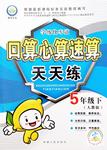题目内容
There was a farm in a small country. The farmer’s daughter had to carry fresh milk to customers in various villages, one of 1. was a priest(牧师). 2. (reach)his house, the milkmaid had to cross a stream. People crossed it by raft(竹筏).
One day the priest, finding it arrived very late, 3. (scold) the poor girl. “What can I do?” she said. “I started out early from my house, 4. I had to wait a long time for the boatman to come.”
Then the priest said, “What! people have even walked across the ocean by 5. (repeat) the name of God, but you can’t cross this little river.” This milkmaid took his words very seriously.
6. then on, she brought the priest’s milk punctually(准时地) every morning. He became curious about it and asked her how it was 7. she was never late any more.
“I crossed the river repeating the name of God, just as you had told me to do, 8. waiting for the raft,” she replied. The priest didn’t believe her, so they went together to the water and the milkmaid began to walk over 9. . Looking back, the milkmaid saw the priest floundering(踉跄) in the water.
“Sir!”she cried. “You are uttering the name of God, but all 10. while you are holding up your clothes from getting wet. That is not trusting in God.”
1.whom
2.To reach
3.scolded
4.but
5.repeating
6.From
7.that
8.without
9.it
10.the
【解析】
试题分析:题目主要考查学生对介词、并列连词、指示代词、强调句型、不定式、固定短语、定语从句、时态等知识的掌握情况。
1.customers,指人时介词后跟whom,one of whom相当于and one of them,故填whom。
2.To reach。
3.finding it arrived very late”是现在分词短语表示伴随状况,句子缺少谓语动词,根据句意可知是过去的事情,用一般过去时,故填scolded。
4.but。
5.repeating。
6. then on从那以后,故填From。
7. is/was...that是强调句型,可以强调除谓语外的任何句子成分,这里强调的是方式状语,强调句的疑问语序是what/how is/was it that...,宾语从句用陈述句语序,故填that。
8.I crossed the river...”可知,小女孩没有等船夫,而是自己蹚过了小溪,without doing sth没有做某事,故填without。
9.it。
10. the while一直,始终,牧师一直提着自己的衣服,说明他不信任上帝,故填the。
考点:考查介词;并列连词;指示代词;强调句型;不定式;固定短语;定语从句;时态

 学练快车道口算心算速算天天练系列答案
学练快车道口算心算速算天天练系列答案